A record 5.5 million entrepreneurs launched new businesses in 2023, according to the U.S. Small Business Administration (SBA). This marks the third consecutive year an historic number of Americans decided to take a leap of faith and go out on their own in the business world.
The wave of entrepreneurship kicked-off during the global pandemic due to job losses, quiet quitting and the normalization of remote work. Due to advances in technology, Americans realized they could be just as innovative and productive working from home without sacrificing any functional capabilities.
Moreover, with artificial intelligence being unleashed at a feverish pace, entrepreneurs will be able to cut down overhead and streamline processes even further which is likely to lead to more new businesses being formed in the years to come.
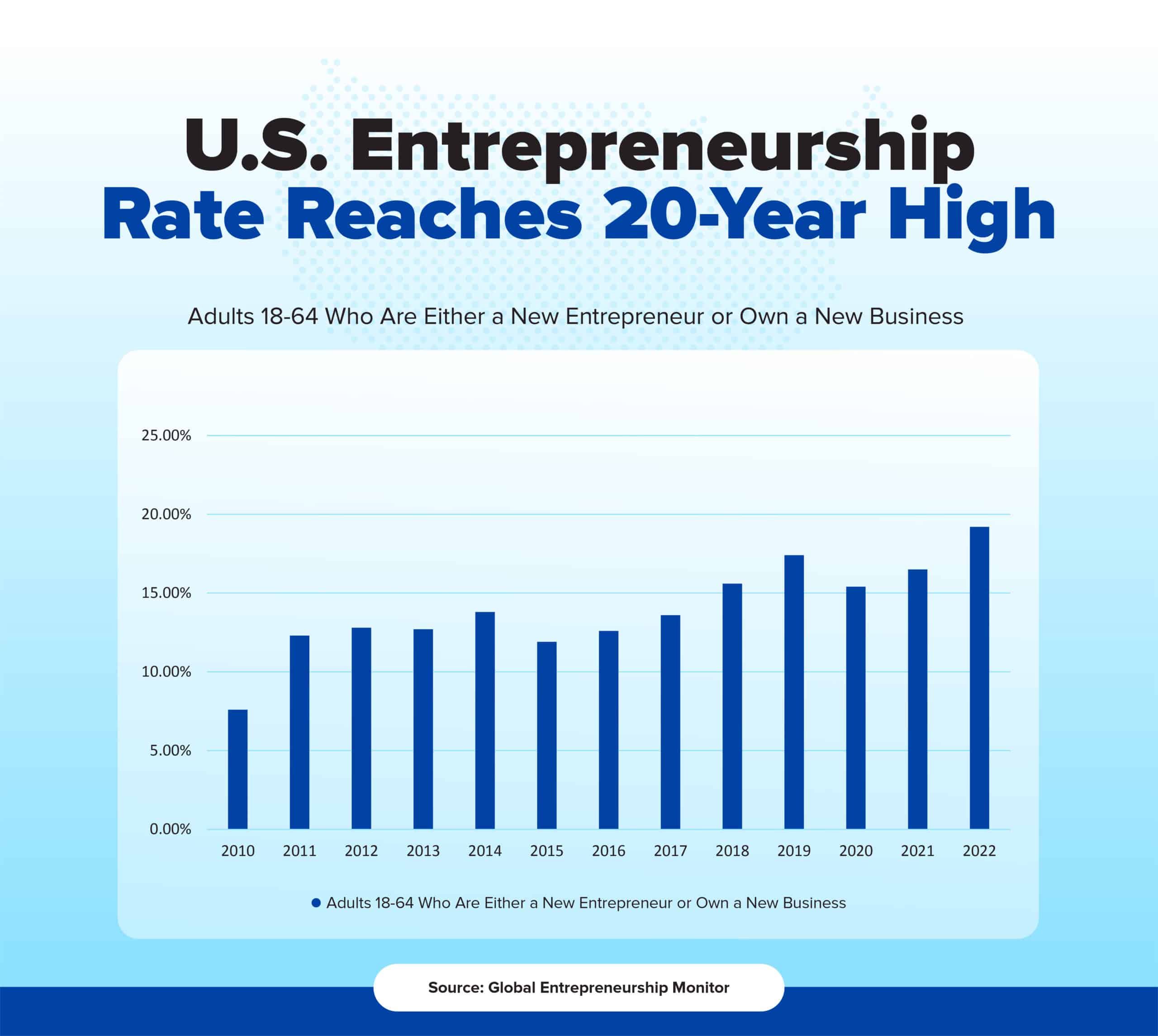
The game has changed and business owners no longer need to be in New York City or Silicon Valley to succeed. When deciding where to set up shop in 2024 there is much to consider.
SimplifyLLC analyzed the most recent federal data across six metrics to identify the best and worst states for entrepreneurs in 2024.
This includes job creation, consumer spending, inflation, business growth, corporate taxes, and whether educated workers are more likely to move in or out of the state.
Key Findings
- Texas is the No. 1 State. The state has no corporate income taxes and has seen rapid business growth over the past year (23.7%). Further, it’s seeing an influx of professionals, with net migration of nearly 76,000 college-educated adults annually.
- Louisiana is the Worst State. Louisiana’s business growth is stagnant, with a 0.2% decline in new operations, and consumer spending growth is just 0.9%. The District of Columbia, California, Mississippi, and New Hampshire also rank among the bottom five.
- Every State Has Its Pros and Cons. Hawaii scored365th due to its poor job creation over the past year, but it does have some of the best scores in the country when it comes to consumer spending growth (4.7%) and keeping inflation down since 2021 (16.9%).
Best States
“Made in Texas” is more than just a good slogan – according to our analysis, the Lone Star State is the best in the U.S. to launch a business. Texas was buoyed to the No. 1 slot by its strong influx of educated workers (a net of nearly 76,000 in 2022) and business growth of 23.7% in the year ending November 2023. Florida was the runner-up, with strong job creation (12.7) and educated worker mobility (net 145,000). Meanwhile, No. 3 Wyoming also has no corporate taxes, and saw the country’s strongest business growth (39.2%) in the year ending November 2023. Even so, every state has its drawbacks, and Wyoming has a high degree of inflation relative to 2021 (19.8%) and low consumer spending growth (0.6%).

Missouri and Delaware rounded out the top five states. No. 4 Missouri excelled in business growth (29.1%), while No. 5 Delaware was raised by its strong job creation (17.1%) and business growth (24.8%).
Worst States
Louisiana is the worst state to start a business, driven by a lack of business growth (-0.2%), high regional inflation (18.3%), low consumer spending growth (0.9%), and weak mobility for educated workers. While about 31,000 educated adults moved into the state in 2022, another 47,600 moved out, meaning the state’s net migration for educated workforce was nearly -16,000. Next up, Washington, D.C., ranked No. 50. The capital city has lackluster scores across the board, but an especially high maximum corporate tax rate (8.25%) and low consumer spending growth (1.2%).
Rounding out the bottom five were California, Mississippi, and New Hampshire. Although No. 49 California has a high job creation rate (12.3) and has seen less inflation since 2021 than most other states (16.9%), it is experiencing an exodus of educated workers, with nearly 149,000 more leaving the state than moving there in 2022. It also has a high maximum corporate tax rate (8.84%) and just 9.8% of businesses say their recent performance is excellent, one of the worst rates in the U.S. Meanwhile, No. 48 Mississippi saw some of the worst business contraction in the country (-5.7%) and consumer spending fell by -3.2% in No. 47 New Hampshire.
Best and Worst States by Metric
New business growth: The rate at which new enterprises are being established reflects the entrepreneurial activity and confidence in a state. States like Wyoming and Pennsylvania have seen explosive growth recently (39.2% and 33%), while Georgia, Mississippi, Alaska and Louisiana have all seen declines (-8%, -5.5%, -2.9% and -0.5% respectively).
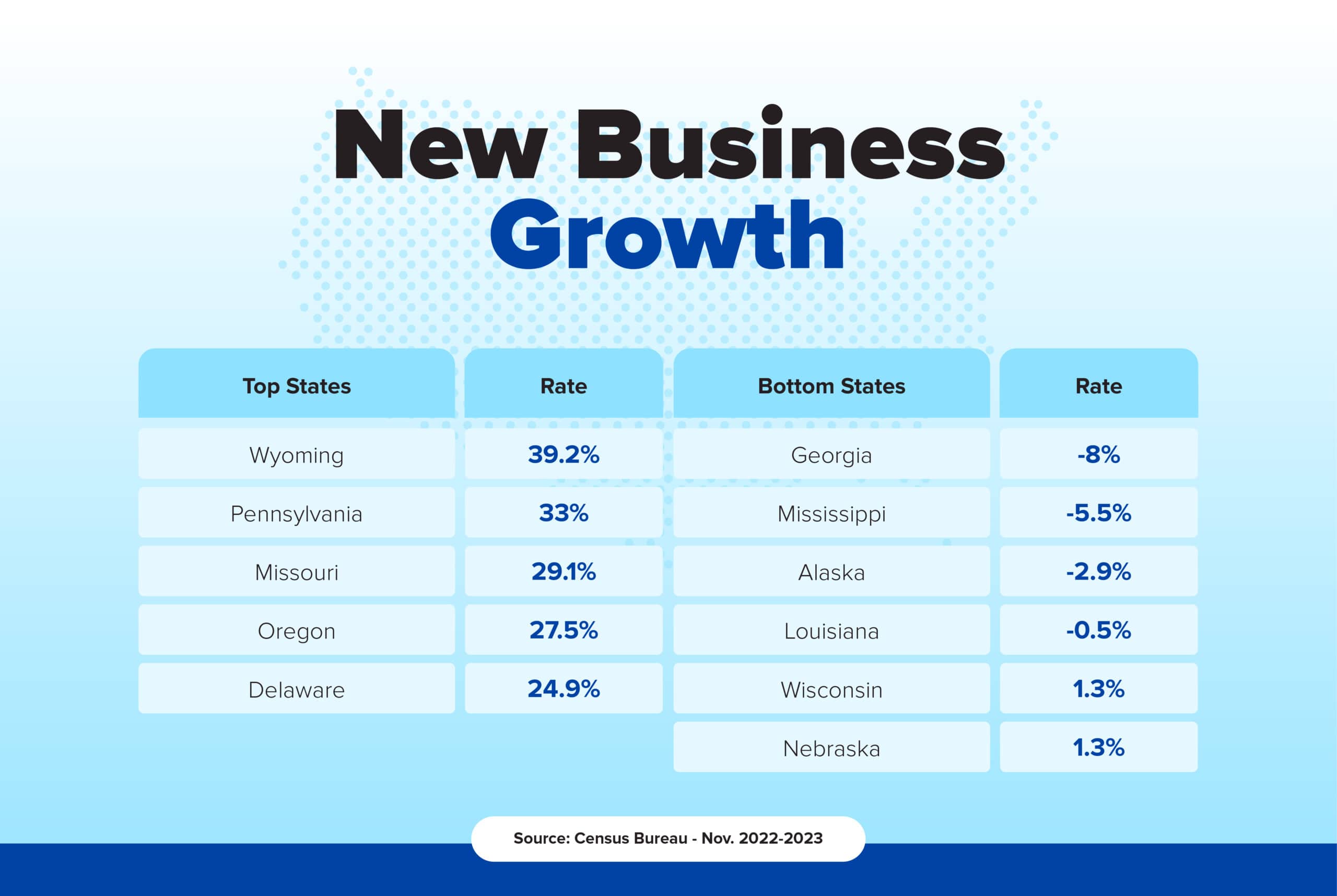
Job creation: The ability of businesses to create employment opportunities is a direct indicator of economic vitality more broadly. Delaware and Utah take the top spots (17.1 and 14.7), while Hawaii and Rhode Island rank last (7.1 and 8.5).
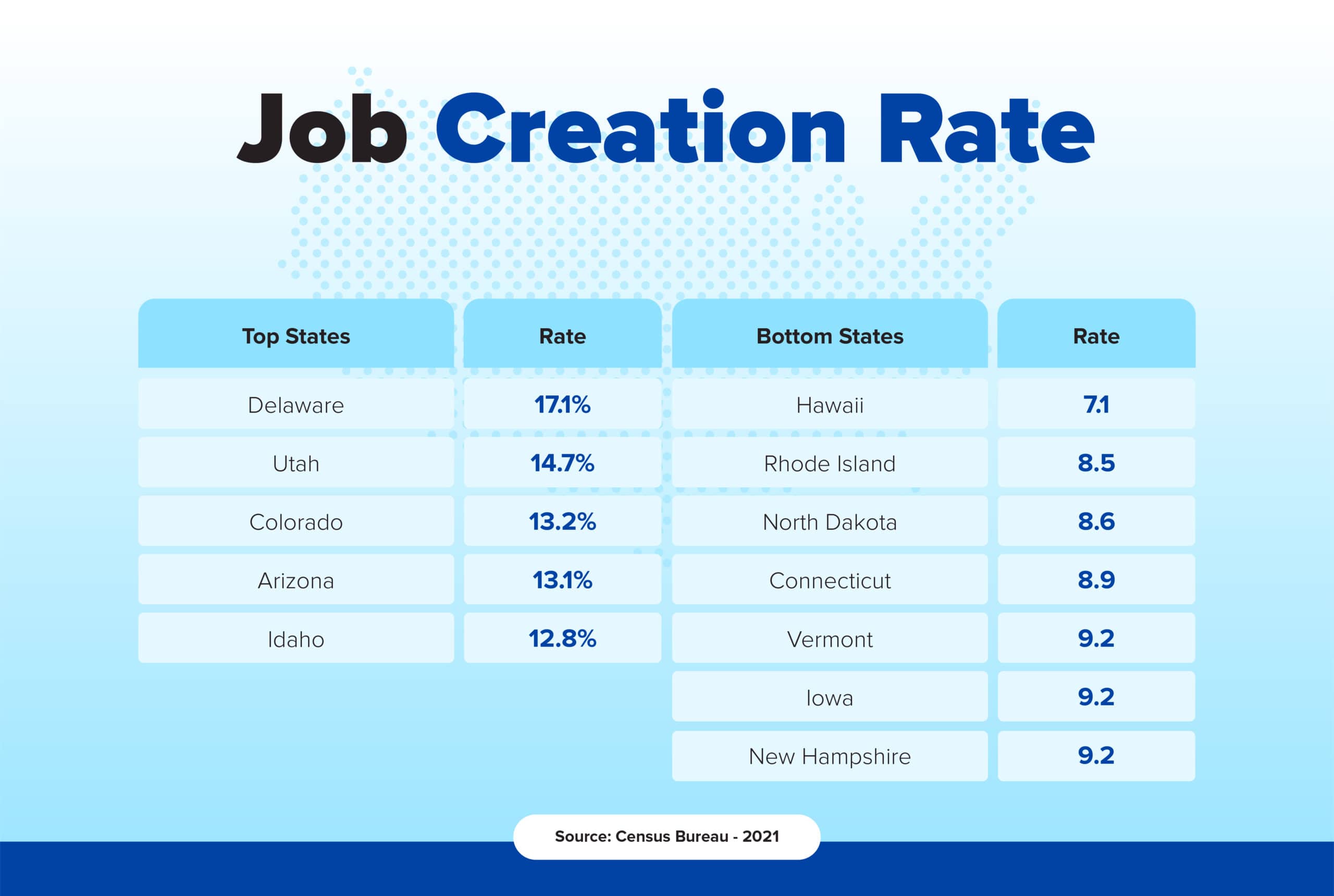
Consumer spending: This is a key indicator that reflects the confidence and financial well-being of state residents, which will influence the success of local businesses. Alaska and Nebraska saw the most growth in 2022 (5.7% and 5%), while the New England states scored poorly, led by New Hampshire (-3.2%).
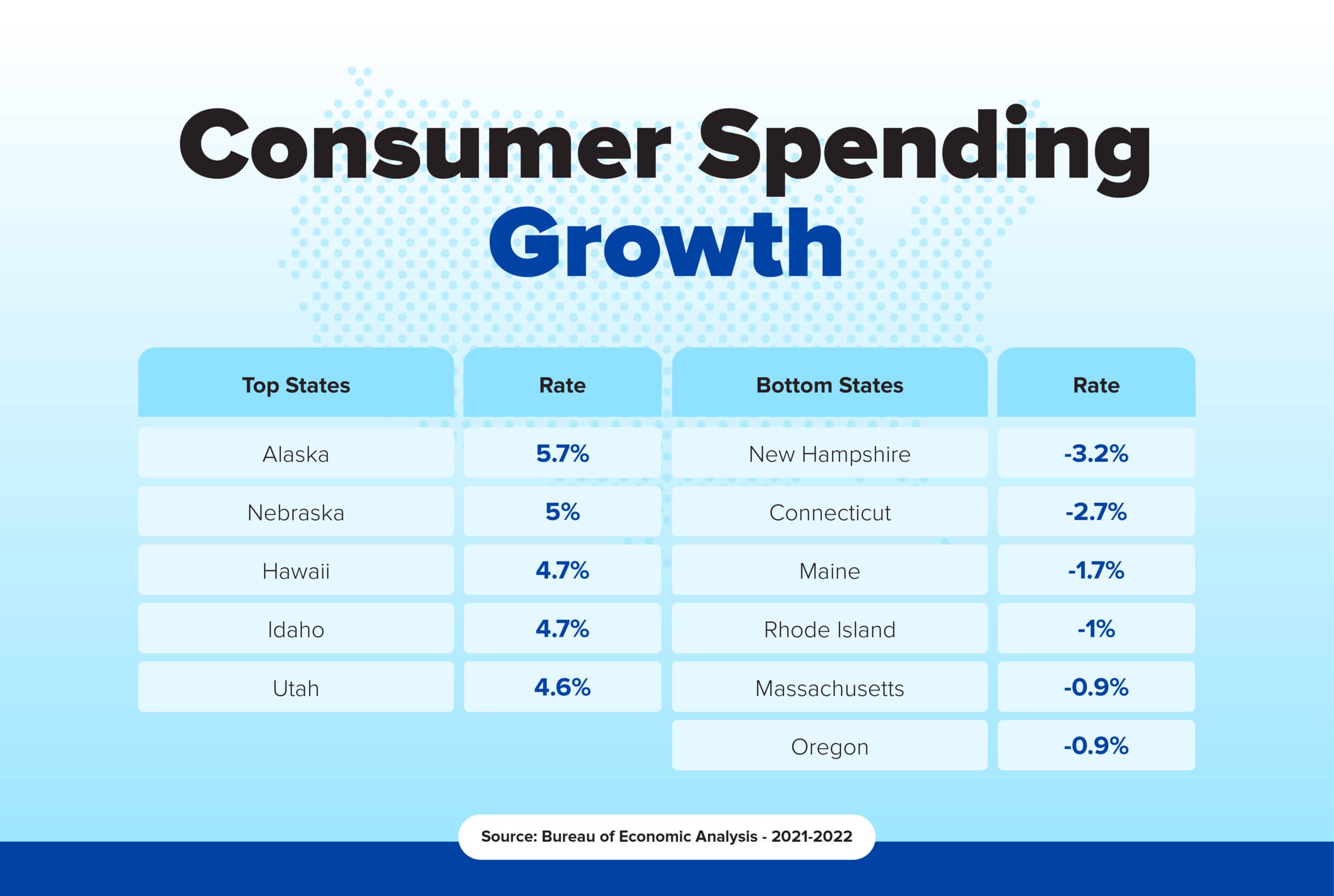
Corporate taxes: The maximum corporate tax rate directly impacts businesses’ financial viability, with a lower tax rate considered to be more favorable. A handful of states have no corporate income tax, landing them at the top of the list, while Minnesota and Illinois have the highest rates (9.8% and 9.5%).
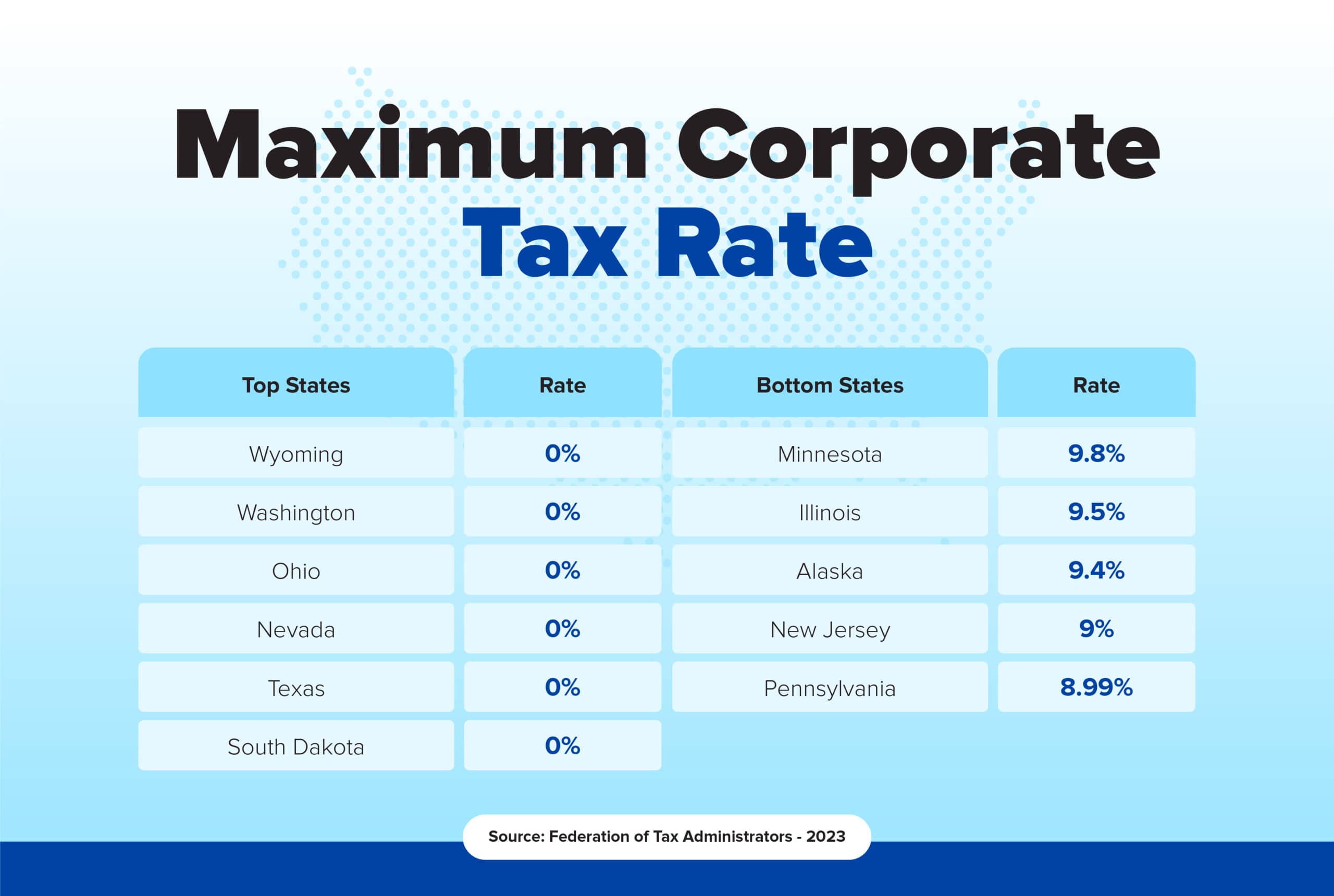
Inflation: Regional inflation rates impact the cost of living and doing business, with a higher rate considered worse for the economic climate. The New England states have seen the lowest rates since 2021, while states like Montana, New Mexico and Idaho have seen rates of nearly 20%.
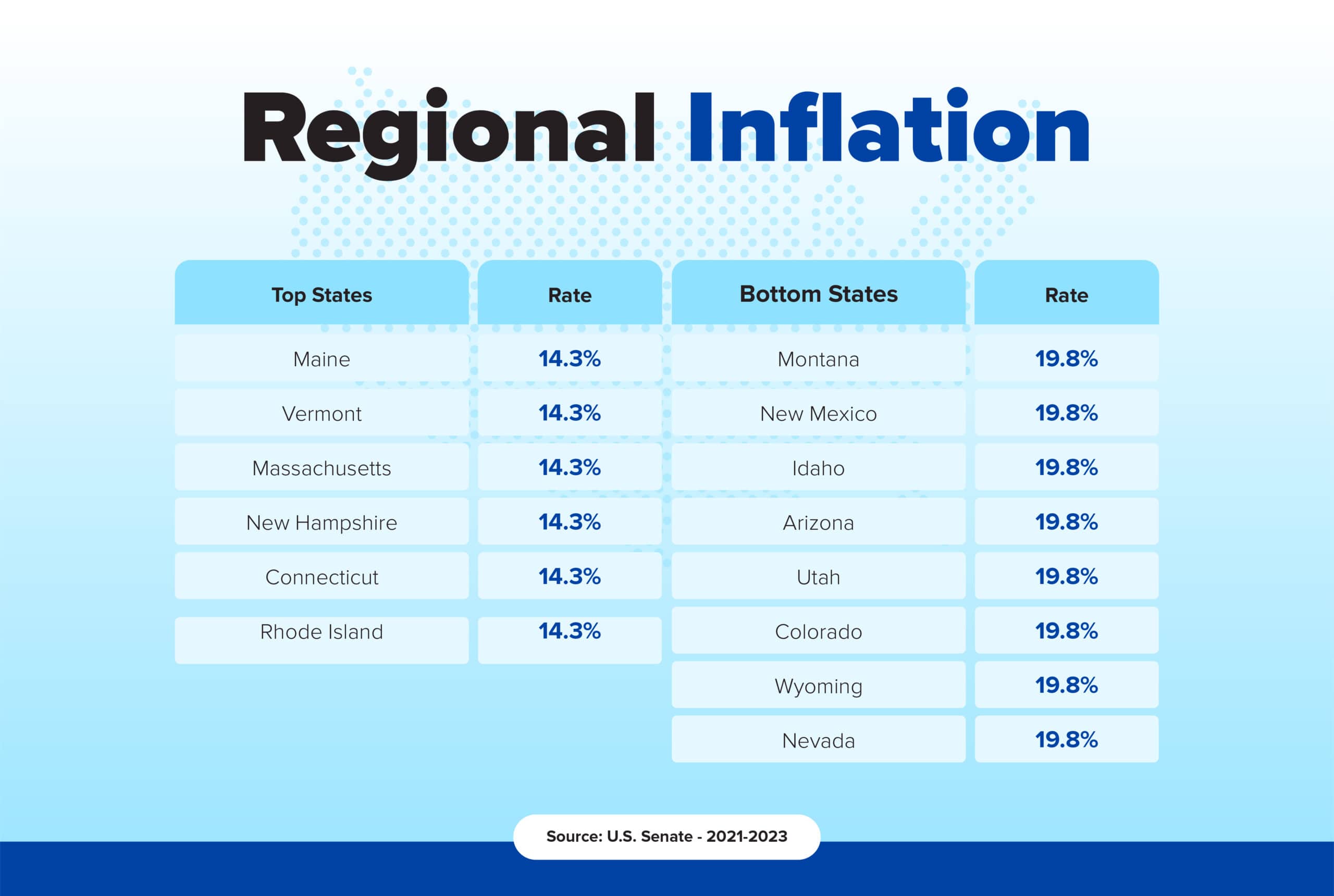
Educated worker mobility: This metric illustrates how attractive a state is for skilled professionals, impacting the availability of a talented local workforce. Florida and Texas rank best here with major influxes of educated adults (net nearly 145,000 and 76,000 respectively), while they’ve been much more likely to leave than enter states like California, New York and Illinois (net approximately -149,000; -121,000 and -54,000).
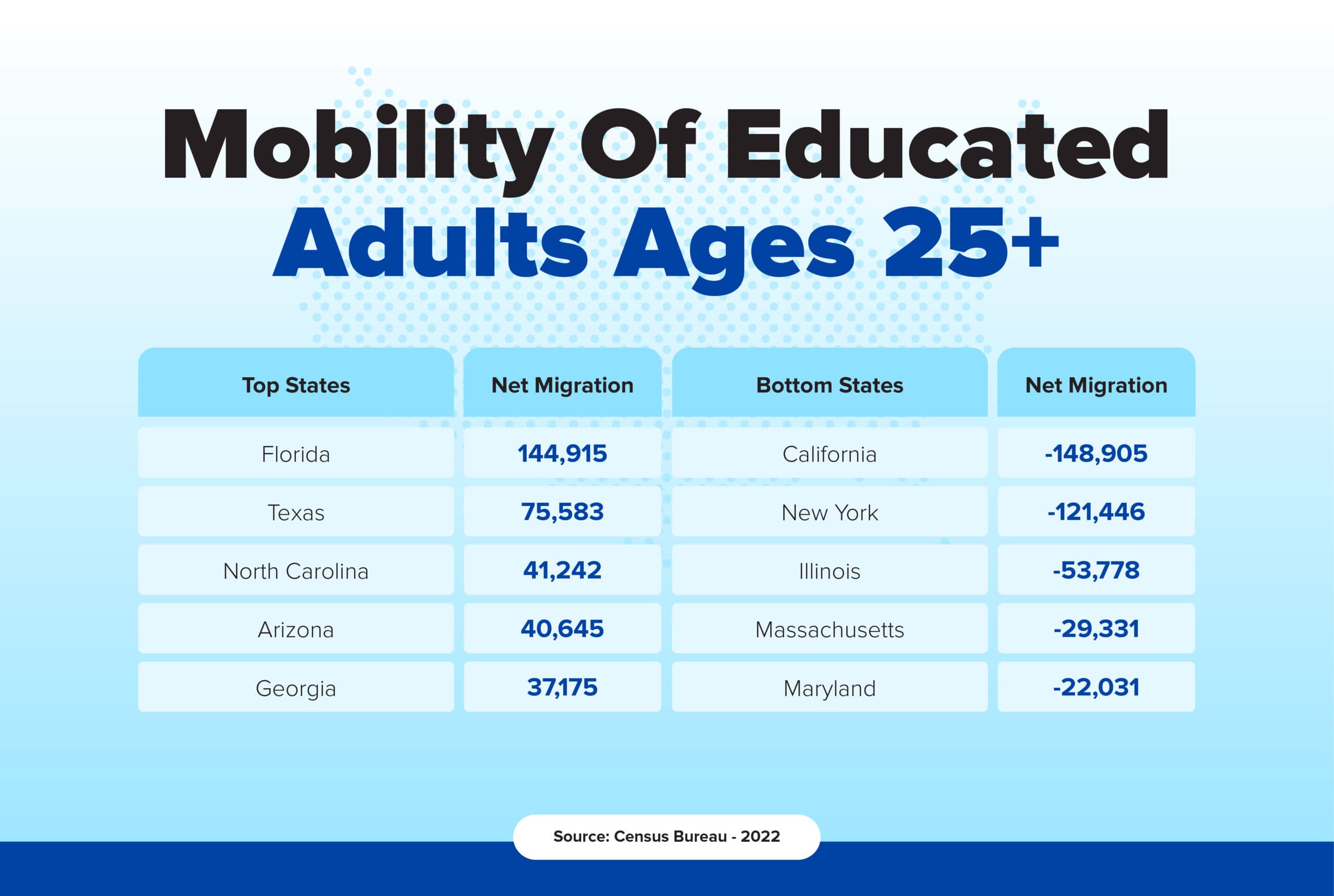
Conclusion
While all states offer various opportunities and challenges for entrepreneurs, our findings may upend preconceived ideas about the traditional hubs of American innovation. As the business landscape continues to evolve in 2024, it’s critical for aspiring entrepreneurs and established businesses alike to keep on top of these regional nuances, enabling them to make strategic decisions about where to set up shop or expand their operations amid an ever-changing environment.
Methodology
We used the most recent data for six metrics to determine the best and worst states to start a business. We used a Z-score distribution to scale each metric relative to the mean across all 50 states and Washington, D.C., and capped outliers at 3. We multiplied these scores by -1 if it was better to have a lower rate, including for corporate tax rates and inflation. A state’s overall ranking was calculated using its average Z-score across the seven metrics. Here’s a closer look at the metrics we used:
- New business growth rate, Nov. 2022-2023 (Census Bureau)
- Job creation rate, 2021 (Census Bureau)
- Consumer spending growth, 2021-2022 (Bureau of Economic Analysis)
- Maximum corporate tax rate, 2023 (Federation of Tax Administrators)
- Regional inflation as of Nov. 2023, relative to Jan. 2021 prices (U.S. Senate)
- Educated worker mobility: Net migration in 2022 among workers with at least some college, an associate's, bachelor's or graduate degree (Census Bureau)